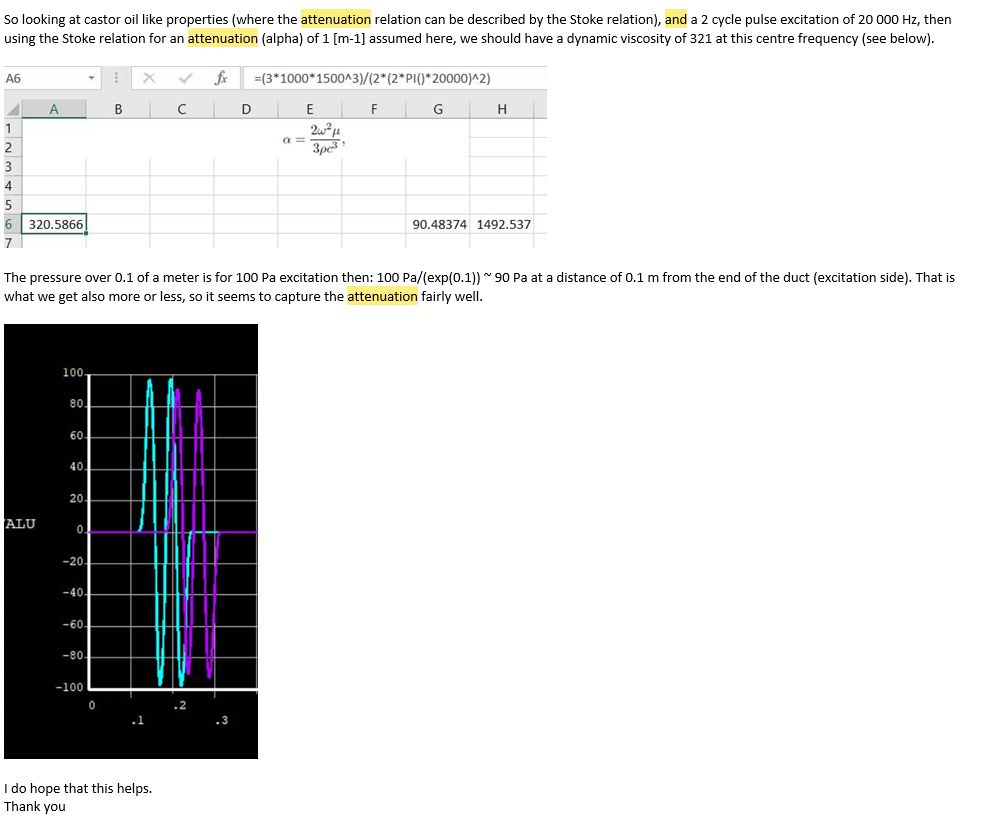-
-
March 19, 2024 at 3:40 pm
mattis.dahleriksson
SubscriberHello,
I am trying to simulate wave propagation in a 3D geometry using the Coupled Field Transient module. Is there any way to include damping effects on the wave propagation? I have read through the theory guide as well as the forum on damping in acoustics, there are some information on viscous damping. I have tried to adjust the viscosity in engineering data but the acoustic body does not seem use that parameter at all.
BR
-
March 19, 2024 at 3:59 pm
-
March 21, 2024 at 8:30 am
mattis.dahleriksson
SubscriberHello,
Thank you for your reply. Yes, that was the post that i referred to. I have tried to replicate that simulation but i cannot reproduce the results. Can you provide some information regarding that particular model?
I have made a 10 m long water "duct" with 0.2x0.2 m2 cross section area using Fluid220 elements, a pressure pulse is applied on one end, a radiation boundary is applied at the other end. I am comparing the regular Water liquid material with 1.003e-09 MPa*s visc to an adjusted Water liquid with 0.001 MPa*s visc, but the acoustic pressure at the radation boundary is the same.
My specific case involves a much slower pulses at 10-20 Hz, at a wave speed of 300 m/s. I want to benchmark my calculation against an analytical simulation that we have, the analytical simulation uses a specified damping ratio and i think this visc parameter could be a good parameter to work with.
BR
-
- The topic ‘Coupled Field Transient – Acoustic’ is closed to new replies.



-
4618
-
1530
-
1386
-
1209
-
1021

© 2025 Copyright ANSYS, Inc. All rights reserved.








